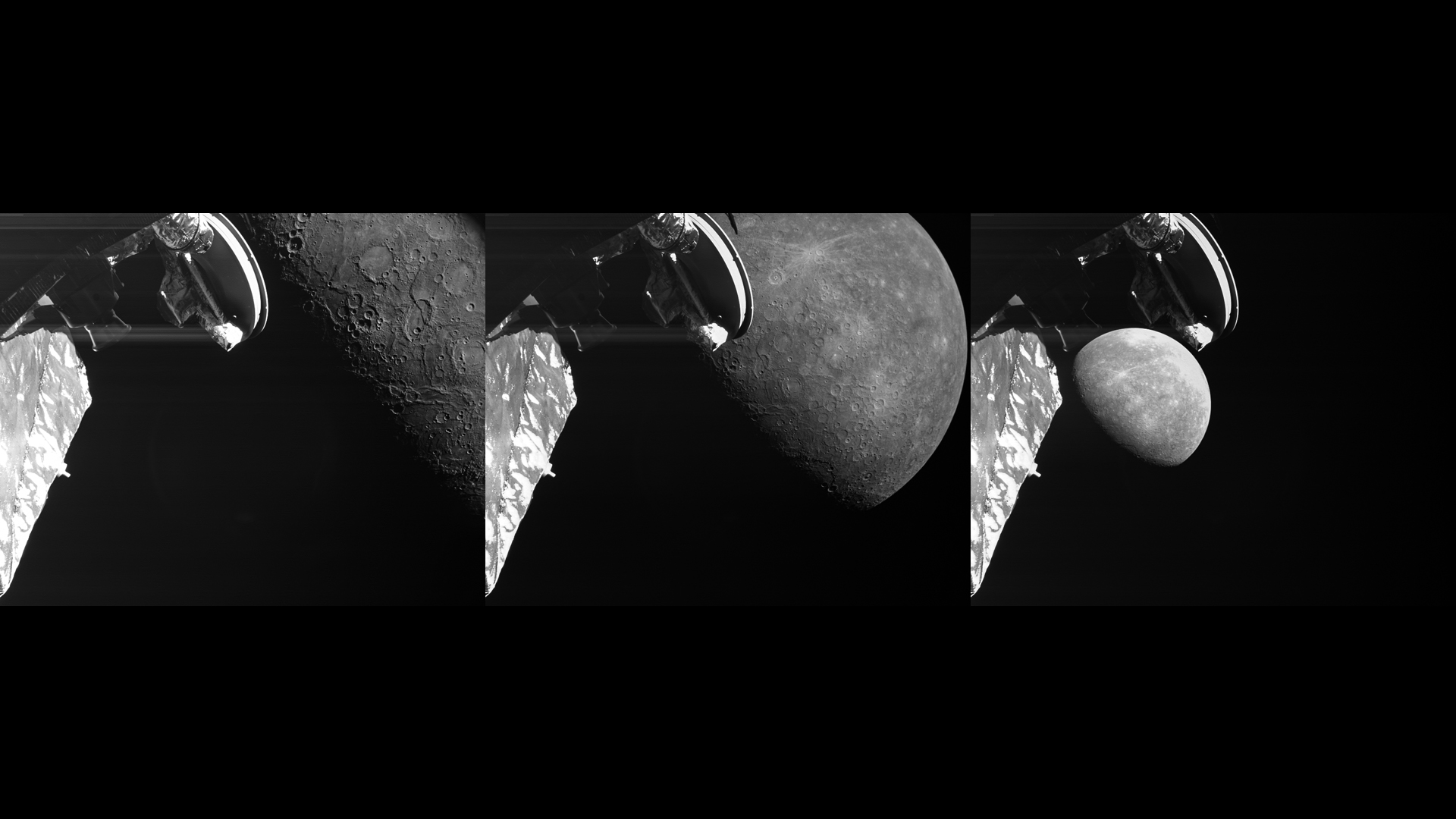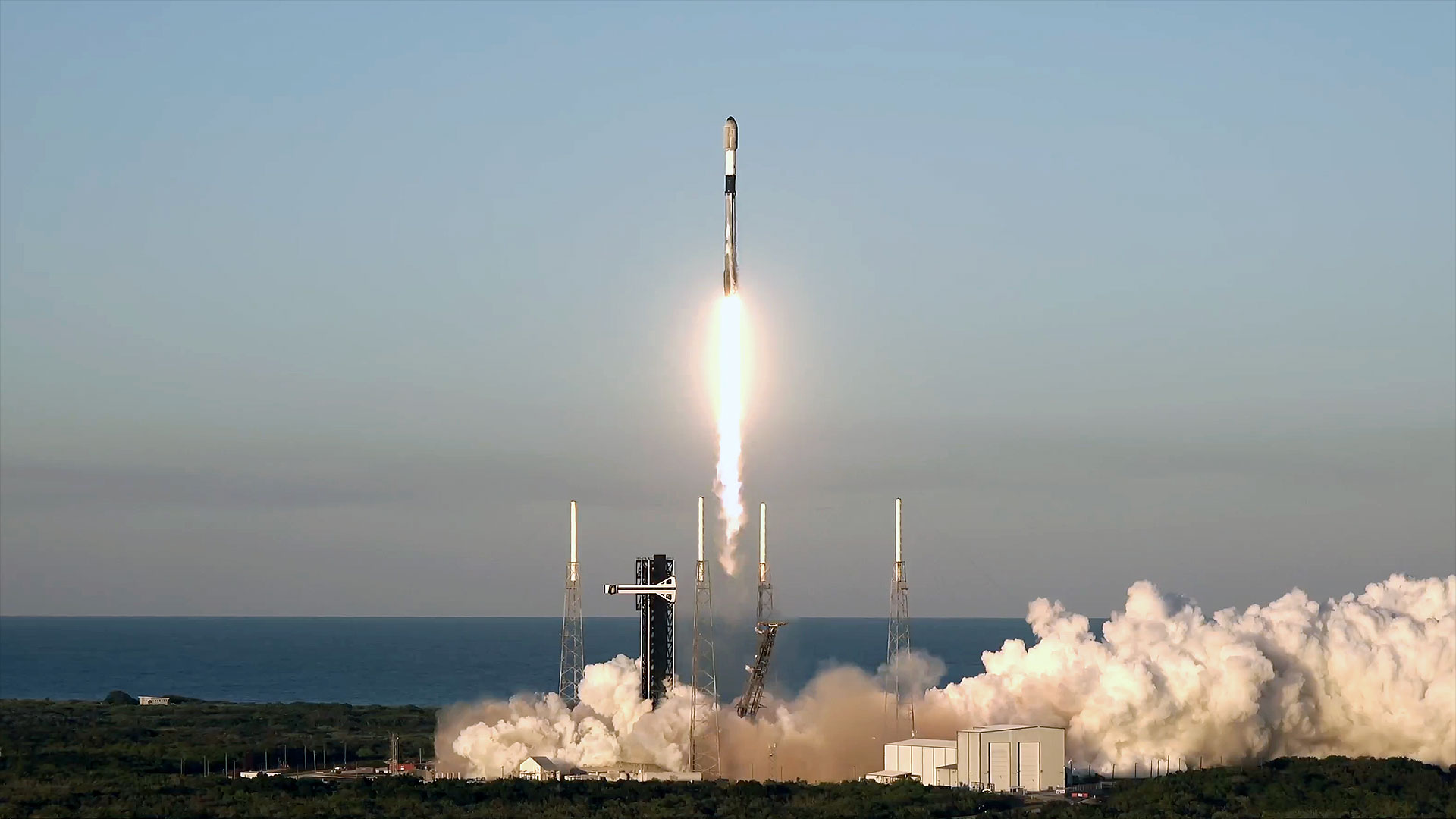European probe captures stunning up-close views of planet Mercury during brief flyby (video, photos)
The flyby took Europe's BepiColombo spacecraft within 150 miles (240 kilometers) of Mercury's surface.
Europe's Mercury-bound probe BepiColombo made its third close flyby of its target planet on Monday (June 19), revealing a surface riddled with craters, including one that just received a name.
The joint European/Japanese mission that launched in 2018 is approaching the final stretch of its seven-year voyage through the inner solar system. During this journey, BepiColombo relies on the gravity of planets Earth, Venus and its target Mercury to slow itself down enough to be able to move from the sun's orbit to that of Mercury in late 2025.
The latest of these gravity-assist maneuvers took place on Monday and saw BepiColombo fly within 150 miles (236 kilometers) of Mercury's surface. Scientists behind the mission used the opportunity to make measurements of the environment close to the solar system's innermost planet and snap images of its scorched surface.
Related: 10 strange Mercury facts
The European Space Agency (ESA) released the first of these new images on Tuesday, less than 24 hours after the closest approach, which took place on Monday at 3:34 p.m. EDT (1934 GMT).
The images reveal what ESA described as a "geology bounty:" a plethora of craters, ancient volcanic ridges and lava flows. One of the most curious features in the images is a crater that has only just received a new name: Edna Manley, after a Jamaican/British artist who died in 1987.
"During our image planning for the flyby, we realized this large crater would be in view, but it didn't yet have a name," David Rothery, Professor of Planetary Geosciences at the UK's Open University and a member of the BepiColombo science imaging team, said in an ESA statement. "It will clearly be of interest for BepiColombo scientists in the future, because it has excavated dark 'low-reflectance material' that may be remnants of Mercury's early carbon-rich crust. In addition, the basin floor within its interior has been flooded by smooth lava, demonstrative of Mercury's prolonged history of volcanic activity."
Breaking space news, the latest updates on rocket launches, skywatching events and more!
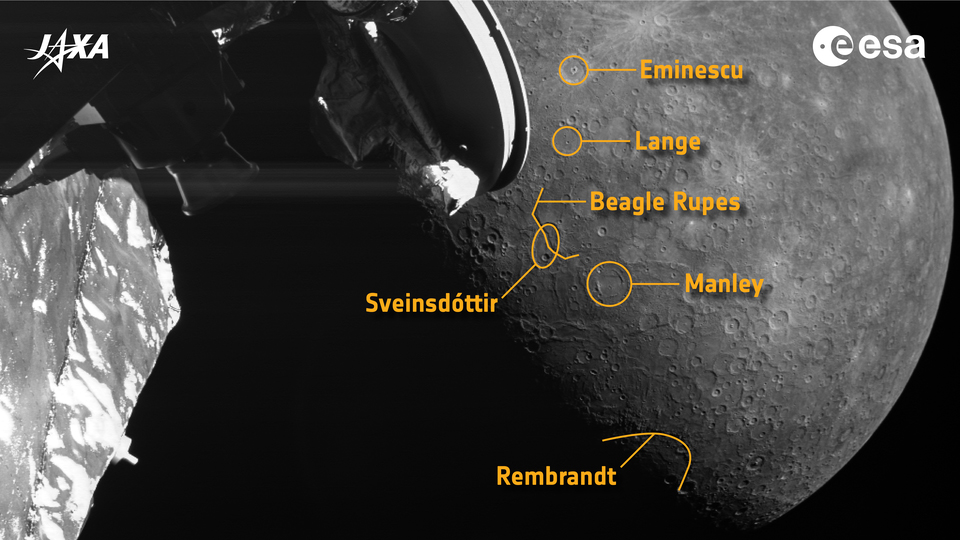
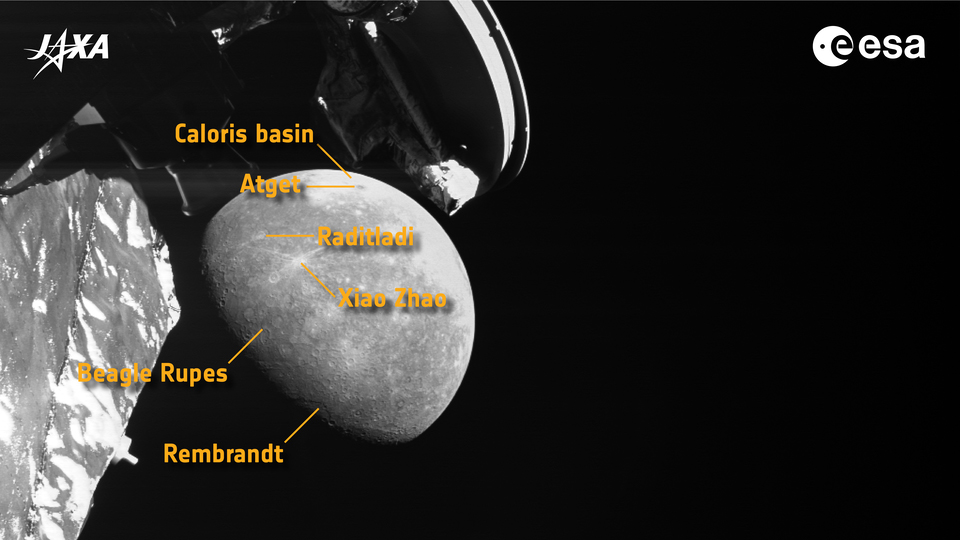
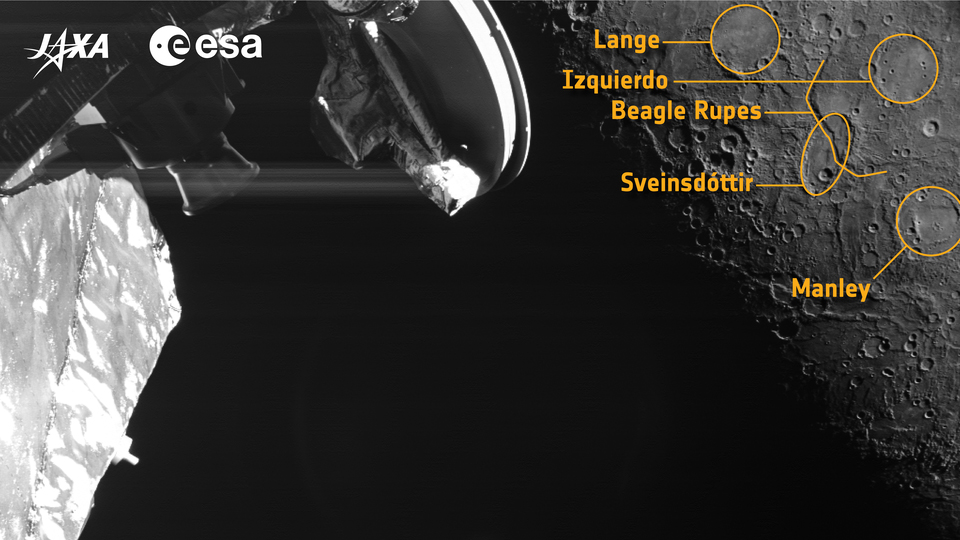
The spacecraft also spotted the Beagle Rupes escarpment, a 370-mile-long (600 km) cliff that formed billions of years ago when the young Mercury cooled and contracted. The Beagle Rupes was discovered by NASA's Messenger mission that orbited Mercury between 2011 and 2015, and scientists are looking forward to comparing the original views with those captured by BepiColombo. The images also reveal a variety of ancient impact basins flooded with volcanic lavas during the first billion of years of the planet's life, when it was still tectonically active.
"This is an incredible region for studying Mercury's tectonic history," BepiColombo team member Valentina Galluzzi, a scientist at Italy's National Institute for Astrophysics, said in the statement. "The complex interplay between these escarpments shows us that as the planet cooled and contracted it caused the surface crust to slip and slide, creating a variety of curious features that we will follow up in more detail once in orbit."
The spacecraft unfortunately couldn't take images during its closest approach, as it arrived at the planet from the night side. The closest images were taken at a distance of 2,170 miles (3,500 km) about 20 minutes after the closest approach.
The BepiColombo mission comprises two orbiters that cruise through space stacked on top of each other, which means that some of the probes' instruments are hidden at the moment. That includes BepiColombo's main high-resolution cameras. The available images from the three monitoring cameras (originally built to observe the spacecraft's solar panel deployment after launch) have a modest resolution of 1024 x 1024 pixels.
The spacecraft has been using these cameras to send home postcards throughout its journey, including from a 2020 flyby of Earth, two flybys of Venus in 2020 and 2021, and two previous Mercury flybys in 2021 and 2022. There will be three more Mercury flybys in the coming years before BepiColombo sheds enough energy to finally be captured by the feeble gravity of the tiny Mercury (which is only a bit larger than Earth's moon) in December 2025.

Tereza is a London-based science and technology journalist, aspiring fiction writer and amateur gymnast. Originally from Prague, the Czech Republic, she spent the first seven years of her career working as a reporter, script-writer and presenter for various TV programmes of the Czech Public Service Television. She later took a career break to pursue further education and added a Master's in Science from the International Space University, France, to her Bachelor's in Journalism and Master's in Cultural Anthropology from Prague's Charles University. She worked as a reporter at the Engineering and Technology magazine, freelanced for a range of publications including Live Science, Space.com, Professional Engineering, Via Satellite and Space News and served as a maternity cover science editor at the European Space Agency.
